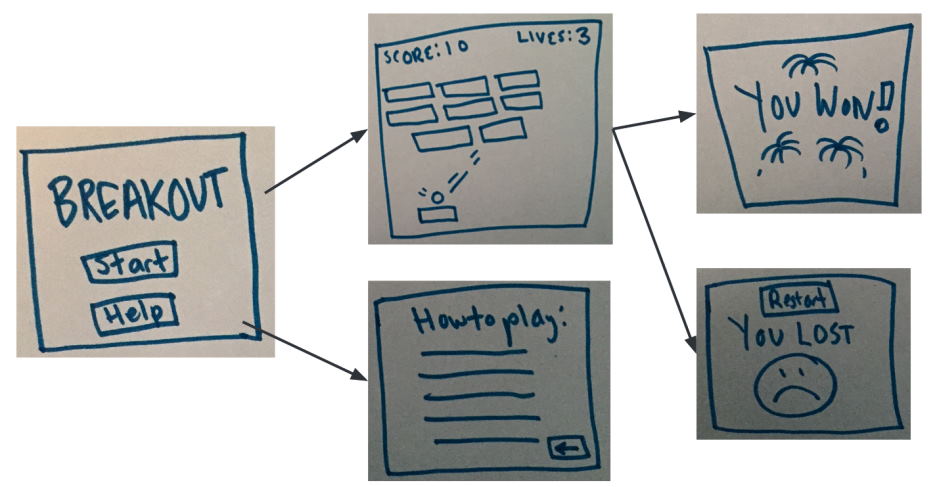Learning to code can be a very rewarding experience, but it can also be challenging. If you’re new to coding or looking to start a new project, it’s important to plan your work carefully and effectively. In this blog post, we’ll discuss some tips for successfully planning your next coding project. Stay tuned for more tips on making the most of your coding journey!
Steps to planning your coding project
When starting a coding project, it’s important to have a plan in place to ensure its success. Depending on the size and scope of your project, this plan may be as simple as a few key steps or as complex as a detailed roadmap. However, no matter the complexity, certain elements should be included in every coding project plan.

- Define the Goal
The first step to any successful coding project is defining the goal. What exactly do you want to achieve with this project? Once you have a clear answer to this question, you can start putting together a plan to make it happen.
- Gather Requirements
After you’ve defined the goal of your project, it’s time to start gathering requirements. What do you need to achieve your goal? This may include things like specific coding languages, frameworks, or libraries. Make sure to document everything so you can reference it later when putting together your project plan.
- Create a Roadmap
Once you have all of the requirements gathered, you can start creating a roadmap for your project. This will detail every step you need to take to complete your project successfully. Include deadlines and milestones so you can track your progress and make necessary adjustments along the way.
- Implement Your Plan
Now that you have a detailed plan, it’s time to start implementing it. This is where the actual coding work will take place. Be sure to follow your roadmap closely and not be afraid to ask for help if you get stuck.
- Test and Deploy
Once you’ve written all the code for your project, it’s time to test it to ensure everything works as expected. This may include both manual testing and automated testing. Once you’re confident in the quality of your code, you can deploy it for others to use.
- Monitor and Iterate
Even after your project is completed, it’s important to monitor it and ensure everything is still working as intended. You may also want to consider making changes or improvements based on user feedback. By iterating on your project, you can ensure its long-term success.
Following these steps can set your coding project up for success. By planning ahead, you can avoid common pitfalls and ensure a smooth development process. So, next time you’re starting a new coding project, use this guide to help you plan it out.

Mistakes during planning software development project
- Defining the scope of the project too narrowly
When you define the scope of your project too narrowly, it can lead to a number of problems down the line. First, it can make it difficult to estimate how long the project will take to complete. Second, it can lead to scope creep, where features not initially included in the project’s scope are added. This can cause the project to take longer and cost more than originally planned. Finally, it can make it difficult to track progress on the project, as you will only be able to measure progress against a specific set of objectives.
- Not getting input from all stakeholders
Another mistake that is often made during the planning phase of a software development project is not getting input from all stakeholders. It is important to get input from all those affected by the project, as they may have valuable insights that you would not otherwise be aware of. Failing to do this can lead to the project not meeting the needs of those stakeholders, which can cause problems down the line.
- Not setting realistic goals
Another mistake that is often made during the planning phase of a software development project is not setting realistic goals. Setting achievable goals for the project is important, as this will help keep everyone on track and focused on what needs to be done. However, setting unrealistic goals can lead to frustration and disappointment, making measuring progress difficult.
- Not planning for risks
Another mistake that is often made during the planning phase of a software development project is not planning for risks. It is important to identify and plan for risks, as this will help avoid problems down the line. Failing to do this can lead to the project encountering unexpected problems, which can cause delays and increase costs.
- Failing to communicate the plan
One final mistake that is often made during the planning phase of a software development project is failing to communicate the plan. It is important to ensure that everyone involved in the project understands the plan and its role. Failing to do this can lead to confusion and frustration, making it difficult to get everyone on the same page.
These are just a few of the mistakes that can be made during the planning phase of a software development project. Avoiding these mistakes can help to ensure that your project is successful.





